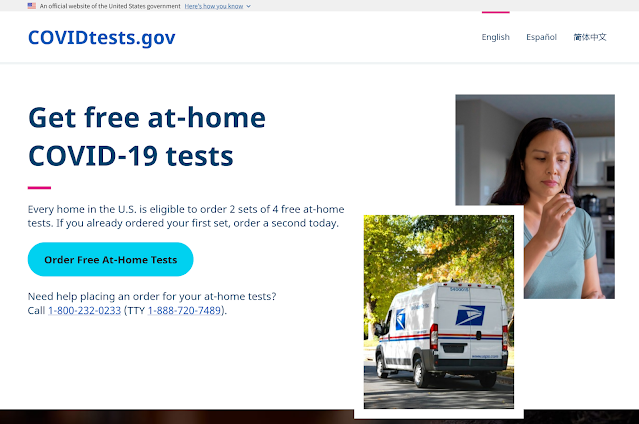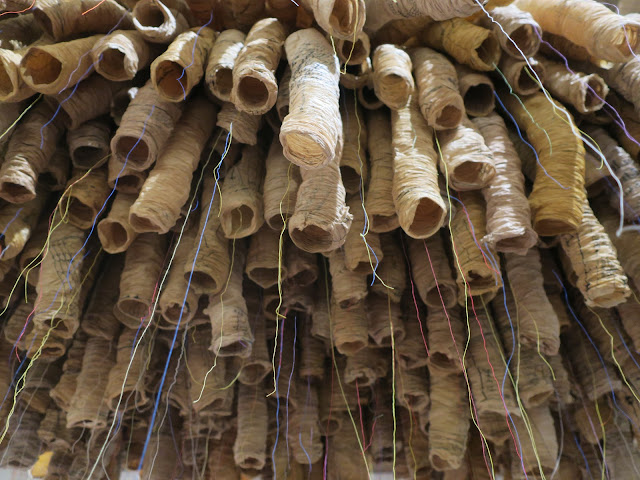 |
| Free rapid COVID tests from US government. March 2022. Credit: Mzuriana. |
To add to the future archives of COVID-19 history, I bring to our societal photo album the four boxes of free rapid tests. Each box holds two tests.
 |
| Screenshot of COVIDtests.gov on March 15 2022 |
I have taken one of the tests. Negative.
By the way: The instructions suck because of inconsistencies or weirdness in style, confusing punctuation, and a red-herring alert.
To wit:
A. You may have Test Set 1 or Test Set 2 in the package. Please follow proper steps based on the specific set you received.
There is no written guidance to tell you which test set you have. To discern which you have, you've got to look at the content images and then the contents of your package. It would have been so simple to state: Test Set 1 has a prefilled tube. Test Set 2 has an empty tube and a bottle of solution. And then the images can support the text.
B. Instructions for Test Set 2: Open the package, take out the COVID-19 Test Card in Pouch, empty Tube, sealed Solution and the Swab.
So you've got a combination of verbal commands and also a series of nouns. And the weird capitalization of the nouns. A lack of articles before the nouns. And silence on the screw-on top for the tube.
This would have been much clearer: Open the package. Remove the contents: a test stick (inside a plastic pouch), an empty tube, a screw-on top for the tube, a bottle of solution, and a cotton swab.
C. Weird information about the TWO EDGES in the empty tube: Please look carefully, there are two edges on the empty tube. Then squeeze the sealed solution completely into the empty tube.
What? Why are the two edges important? The sentence following this alert gives no guidance. It isn't until after the images that they become relevant.
This would have been much clearer: Squeeze all of the solution from the bottle into the tube. There are two edges in the side of the tube. Look at the edges in the drawing. The solution in the tube must be at Edge 1 or higher. If the solution is below Edge 1, the test result might be invalid.
Finally: The technical writers and their supervisors have not followed the principles of plain language. When a target readership is the general public, plain language is a must. Not because the general public lacks intelligence. It's because, in the case of the COVID-19 self-testing kits, most members of the general public have neither experience in lab testing nor exposure to the clinical vocabulary.
The INTENDED USE section of the test instructions seems directed to health care professionals, based on the polysyllabic clusterfuck in same, in addition to the:
- Use of third person in reference to the test takers; and
- Reliance on passive voice.
However, the technical writers change the voice in the FAQ to second person ("you" form), which is an improvement in readability for us regular folks.
 |
| Lotsa tubes. Exhibit name: Chubasco. Tohono Chul, Tucson, Arizona. April 2019. Credit: Mzuriana. |
No comments:
Post a Comment